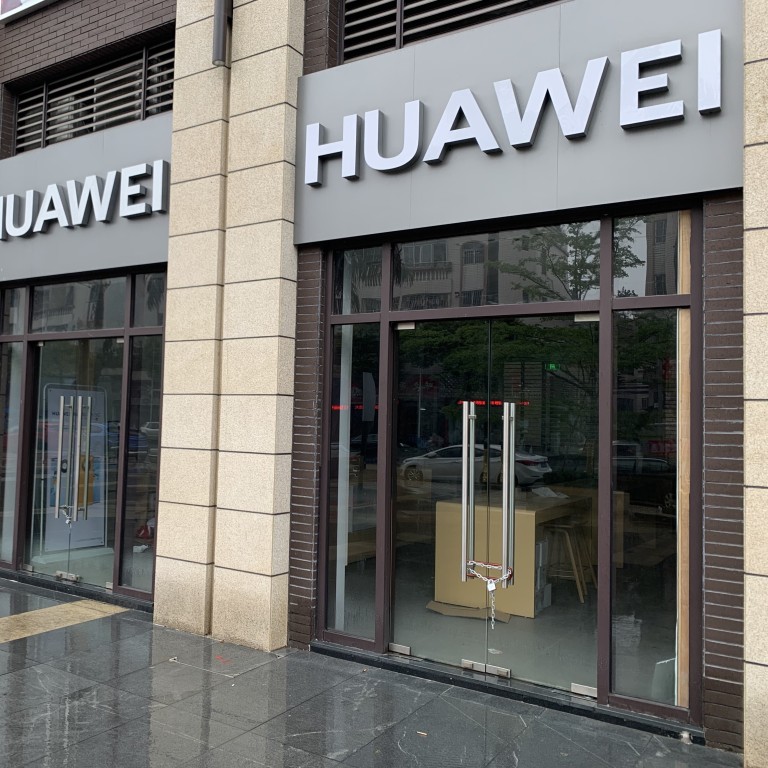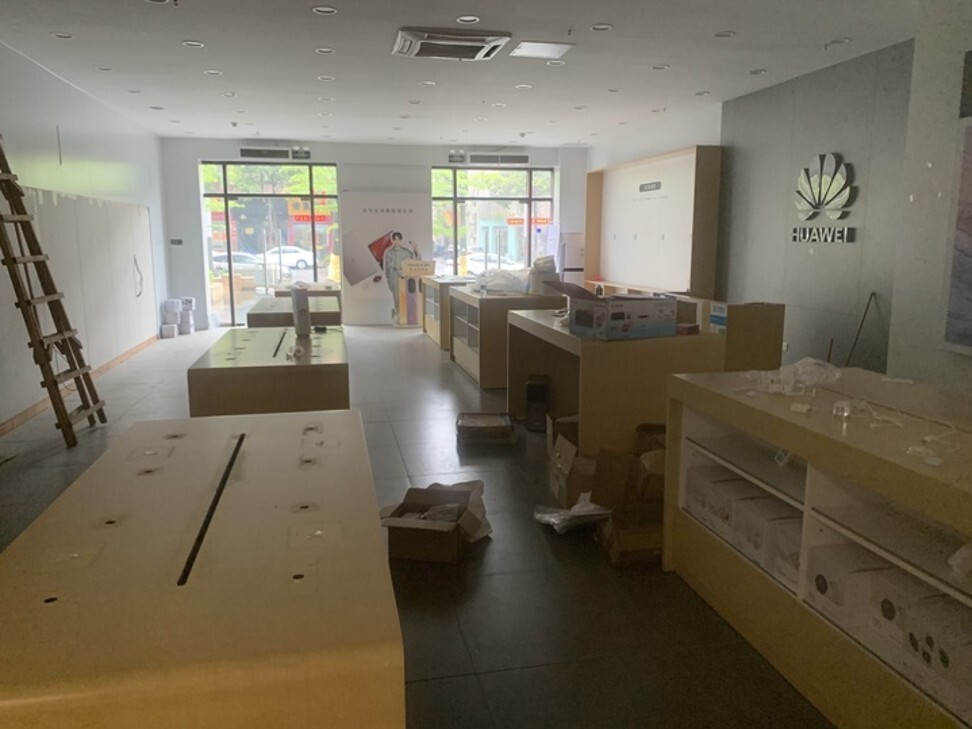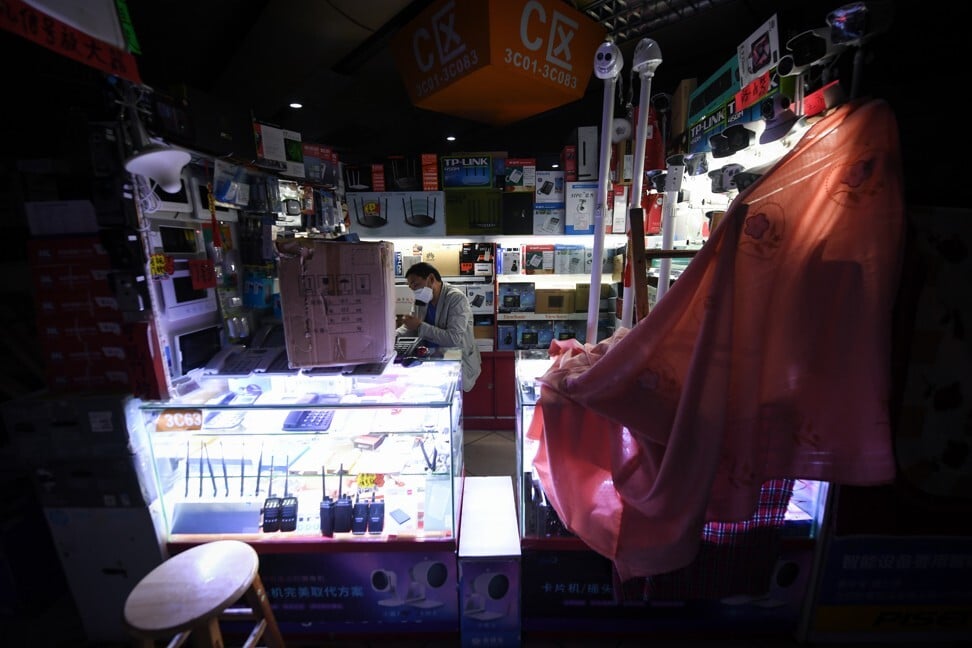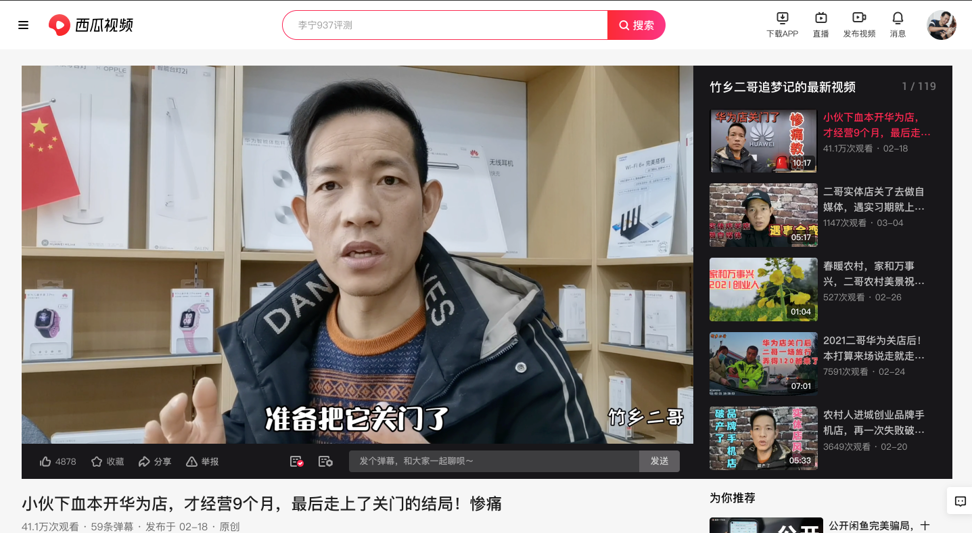
In China, Huawei’s smartphone star is quickly fading as US sanctions bite
- The Chinese telecoms giant is expected to produce much fewer smartphones this year after US restrictions blocked its access to key hardware and software
- Plunging supplies of Huawei phones are forcing franchise retailers to close stores or switch to selling other domestic brands
At a premier spot in Donlim Emperor Court, a shiny new shopping centre in the southern Chinese city of Foshan, stands a 1,700-square-foot Huawei store. With massive Huawei logos adorning its walls, the franchise outlet has been such a treasured presence that the mall’s property management featured it in promotional materials to woo potential tenants.
On a recent visit, however, the store was deserted, save for a tiny Christmas tree and a few pieces of furniture. The door was locked. It turns out that the shop permanently closed right before Lunar New Year, just eight months after opening.
The sharp decline in production has dealt a massive blow to Huawei’s retail distributors. Eddie Cen, a leasing manager at Donlim Emperor Court, said he was told by the owner of the closed Huawei store that supplies for Huawei devices had dried up. That distributor, which operated 30 Huawei outlets at its peak, is closing at least nine of them, according to Cen.
The problem is not unique to Foshan. Across the country, reports of dwindling stocks of Huawei smartphones have surfaced in recent months as retailers switch to selling other domestic brands such as Oppo, Vivo and Realme.
Huawei declined to comment for this article.

Before the worst impact of the US restrictions kicked in, new Huawei franchise outlets had been mushrooming across the country.
The brand had been popular among domestic retailers partly because its models often offered a fatter profit margin. A new Huawei phone could be sold for as much as 1,000 yuan (US$154) above the sourcing price, or three times the margin of other Chinese brands, said Tony Zhang, a phone vendor in Foshan.
While Huawei was first subject to Washington’s sanctions in 2019, the company was initially able to produce smartphones with semiconductors it had stockpiled from US suppliers and ramped-up orders from Taiwan Semiconductor Manufacturing Co. Expanded sanctions last year, however, banned foreign chip makers that use US technology from selling to Huawei without Washington’s approval. The move virtually cut off Huawei from most global chip suppliers.
Huawei bets on AI pig farming as a new growth area outside smartphones
Opening a Huawei retail store in 2020 proved to be “a huge miscalculation for many people”, said Zhang.
Huawei is forecast to be able to produce only 70 to 80 million handsets this year, a significant decline from the 189 million units it shipped last year, according to market research firm IDC. Shipments this year could fall further to just a fifth of the volume in 2020, according to Ethan Qi, an analyst at Counterpoint Research.
“Most physical shops are now running out of stock [of Huawei phones],” Qi said. “Huawei has been grading its distributors based on their performance since last September, and now even the big shops have started to struggle [with maintaining supplies], and the small ones have no chance of filling their inventories”
One retailer, who declined to be named, said that some people seek high-end Huawei models like the Mate X2, priced officially at 17,999 yuan, because of their rarity. “Few people will buy this foldable phone for daily use, but people will buy it as a gift. The price has increased to over 24,000 yuan.”
Even more mainstream products, such as the Mate 40 Pro, Huawei’s flagship 5G smartphone that launched in China in December, are running out of stock. “For the yellow Mate 40 Pro, for instance, my store may have only one or two left,” one retailer said.

Some Huawei distributors did not survive the downturn.
A business owner surnamed Deng, who calls himself Second Brother, has been documenting his fleeting journey of opening and closing a Huawei store in Sichuan province in the span of nine months.
In a clip posted on Xigua Video last month, which has amassed more than 400,000 views, Deng said that even though he had “put my heart and soul” into the store, it did not stop it from going bust. His despair stood in stark contrast with the optimism with which he opened his shop last May: in his earliest videos, Deng spoke with hope for his new life and business.
According to Deng, supply of Huawei devices to his store started to plunge around September. There were often spells of more than 10 days without any shipments at all. He gradually became frustrated with what he saw Huawei’s opaque management of its supplies, lamenting in several videos that there was no predictability as to when he would be getting new phones.
“Every day I wished for the star, the moon and Huawei phones,” he said in a video posted in February, the month that he closed his shop.
Deng said he had lost 100,000 yuan.

Huawei’s remaining reserves of Kirin 9000 chips, the ones used in Huawei P40 models, may still be able to support limited production of the upcoming P50 and Mate 50, according to a recent report from Tencent News. Production of most mid-range and budget phones has been discontinued.
The shortage has created a black market for Huawei handsets. Ben Xu, a resident in the southern city of Guangzhou who promised to gift his employees Huawei phones late last year, said he was forced to pay an additional 500 yuan for each unit he bought.
“There is no way you can get Huawei phones through the regular channels,” Xu said.
While Huawei phones remain beloved by some of its most loyal fans – the foldable Mate X2 sold out within one minute of its online debut – some analysts said Huawei might soon lose its edge to rival brands.
“Oppo and Vivo already have a very strong offline retail strategy. They are likely to be the biggest beneficiaries of Huawei’s current plight. Realme is also showing strong momentum in becoming an important player in the market,” said Counterpoint’s Qi.


